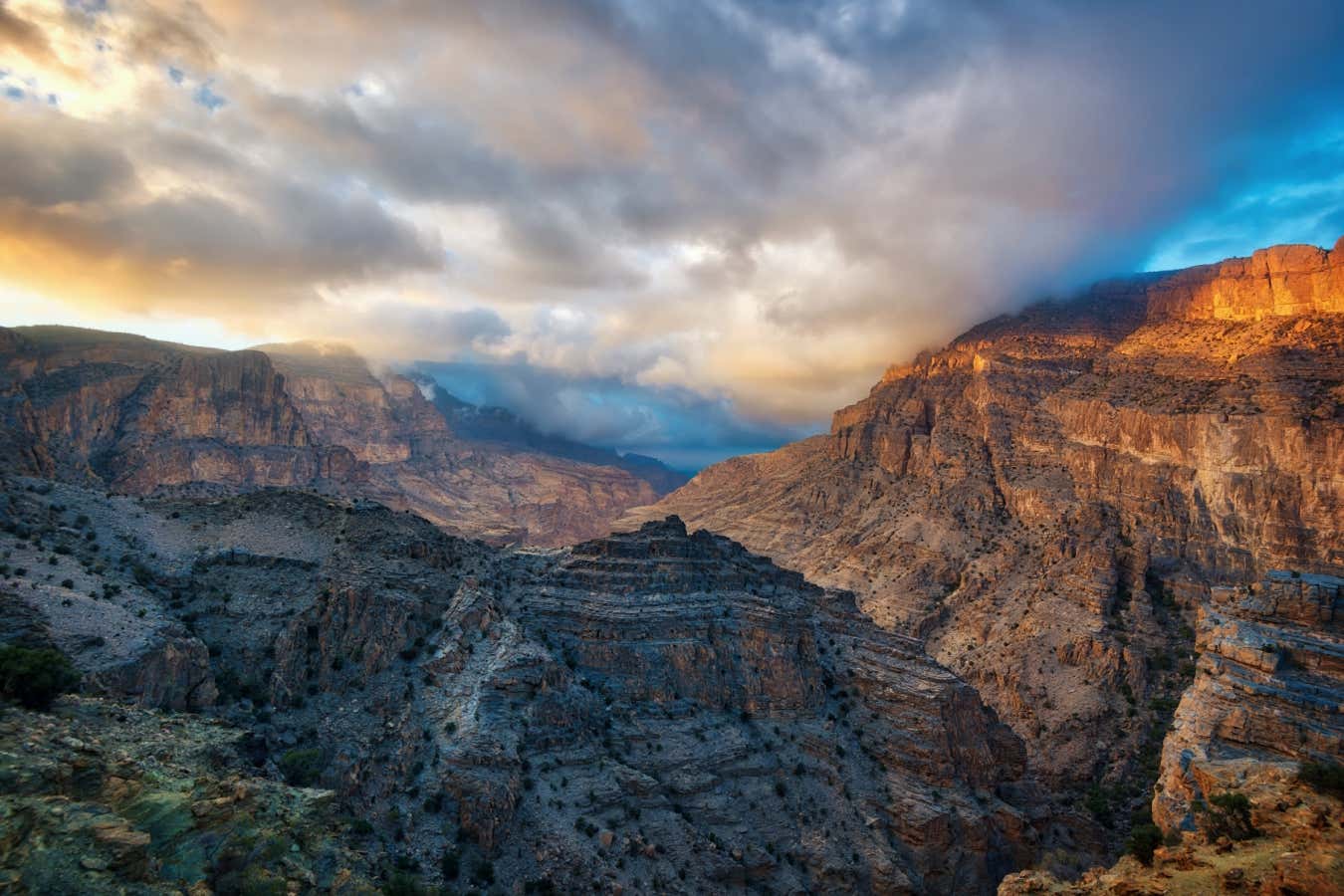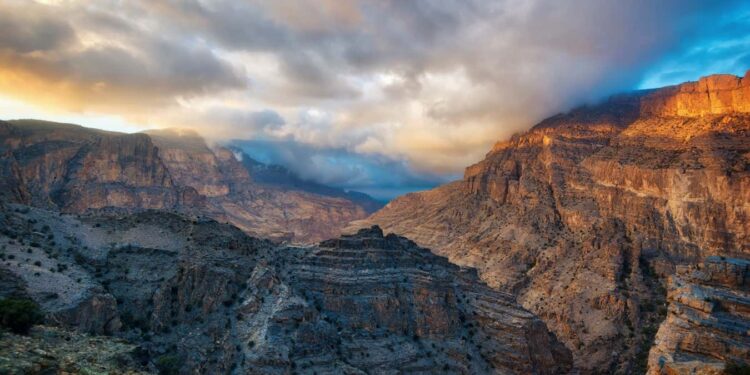
Al Hajar Mountains in Oman
L_B_Photography/Shutterstock
A section of Earth’s mantle beneath Oman appears to be unusually warm, in what researchers say may be the first known “ghost plume” – a column of hot rock emanating from the lower mantle without apparent volcanic activity on the surface.
Mantle plumes are mysterious upwellings of molten rock believed to transmit heat from the core-mantle boundary to the Earth’s surface, far from the edges of tectonic plates. There are a dozen or so examples thought to occur underneath the middle of continental plates – for instance, beneath Yellowstone and the East African rift. “But these are all cases where you do have surface volcanism,” says Simone Pilia at the King Fahd University of Petroleum and Minerals in Saudi Arabia. Oman has no such volcanic clues.
Pilia first came to suspect there was a plume beneath Oman “serendipitously” after he began analysing new seismic data from the region. He observed the velocity of waves generated by distant earthquakes slowed down in a cylindrical area beneath eastern Oman, indicating the rocks there were less rigid than the surrounding material due to high temperatures.
Other independent seismic measurements showed key boundaries where minerals deep in the Earth change phases in a way consistent with a hot plume. These measurements suggest the plume extends more than 660 kilometres below the surface.
The presence of a plume could also explain why the region has continued to rise in elevation long after tectonic compression – a geological process where the Earth’s crust is squeezed together – stopped. It also fits with models of what could have caused a shift in the movement of the Indian tectonic plate.
“The more we gathered evidence, the more we were convinced that it is a plume,” says Pilia, who named the geologic feature the “Dani plume” after his son.
“It’s plausible” that a plume indeed exists there, says Saskia Goes at Imperial College London, adding the study is “thorough”. However, she points out narrow plumes are notoriously difficult to detect.
If it does exist, however, the presence of a “ghost plume” contained within the mantle by the relatively thick rocky layer beneath Oman would suggest there are others, says Pilia. “We’re convinced that the Dani plume is not alone.”
If there are many other hidden plumes, it could mean more heat from the core is flowing directly through the mantle via plumes, rather than through slower convection, says Goes. “It has implications, potentially, for the evolution of the Earth if we get a different estimate of how much heat comes out of the mantle.”
Topics:
Source link : https://www.newscientist.com/article/2484146-earths-mantle-may-have-hidden-plumes-venting-heat-from-its-core/?utm_campaign=RSS%7CNSNS&utm_source=NSNS&utm_medium=RSS&utm_content=home
Author :
Publish date : 2025-06-13 19:37:00
Copyright for syndicated content belongs to the linked Source.









